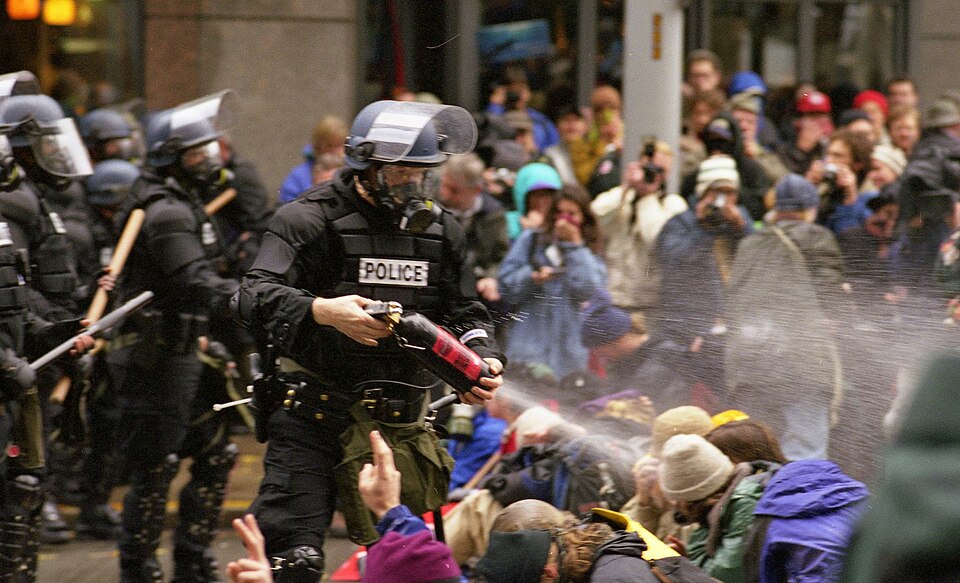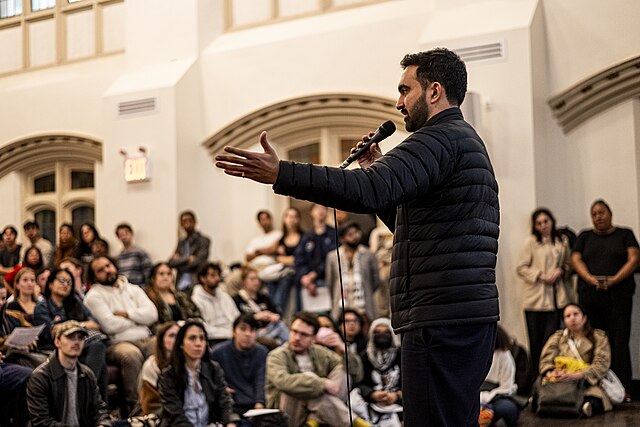The right wing press have got awfully worked up about two Just Stop Oil activists throwing soup at Van Gogh’s “Sunflowers” in London’s National Gallery. Although the only damage done was to slightly stain the glass sheet in front of the painting, a number of columnists who have previously shown little interest and even less activity in saving the environment were appalled at the actions of the “Van Gogh vandals” (Daily Mail).
In the Sunday Times, Camilla Long wrote an article called: Attacking art in the name of cleansing our world — isn’t that what the Nazis did? Ian Dunt, editor-at-large of Politics.co.uk, tweeted: “You absolute fucking philistine barbarians.” Andrew Marr, former political of BBC News, tweeted: “Right. They’ve absolutely lost me. Forever.” I’m sure the protestors are devastated.
Interviewed by the Daily Mail, art historian Ruth Millington said: “I think that attacking one of the world’s most loved paintings, which I would call priceless, will not gain these protestors public support. That is what they need in order to effect real change.” This view was shared by some on the Left, who support the cause but had misgivings about the action.
The soup throwers, Anna Holland and Phoebe Plummer, were both arrested for criminal damage and aggravated trespass. What were their demands? The BBC reported: “Videos of Friday’s incident showed a protester shouting: ‘What is worth more? Art or life? Is it worth more than food? Worth more than justice? Are you more concerned about the protection of a painting or the protection of our planet and people?’”
Climate Change under Liz Truss
The protests took place while the British government was showing willful disregard for the environment. One of the first acts of new prime minister Liz Truss was to lift the UK ban on fracking. She recently announced that she will issue up to 130 new oil licenses for North Sea drilling. UK climate minister Graham Stuart said that awarding the licences was “good for the environment.”
Last month, a leaked video showed energy minister Jacob Rees-Mogg telling his staff that Britain “must get every cubic inch of gas out of the North Sea.” It is not surprising that activists do not trust the Truss government to protect the environment and are taking matters into their own hands.
The Tory government is also proposing a new Public Order Bill which is particularly aimed at environmental activists. It will criminalize interfering with trains or power stations, obstructing highways, and “attaching yourself to something” – an offence which could potentially include locking arms.
These are all action forms which have been used with some effectiveness in recent years, particularly by climate change activists. As George Monbiot reports: “For locking or glueing yourself to another protester, or to the railings or any other object, you can be sentenced to 51 weeks in prison – in other words, twice the maximum sentence for common assault.
Government failure to tackle climate change is not restricted to the UK. Although the Greens joined the German government last year, their record is little better. It’s not just that one of the first acts of the new government was to double the budget of the military – one of the most environmentally dangerous organisations. Nor that the Green transport minister in Berlin is a keen fan of rail privatisation.
The Greens have been agitating in the “traffic light coalition” for an extension of nuclear power. Green finance minister Robert Habeck made a plea to keep nuclear plants open, The Greens gained a massive upsurge of support on the back of promises to protect the environment. Much of their basis is deeply disappointed. Some are turning even more towards extra-parliamentary action.
Our MPs refuse to even acknowledge the urgency of the situation, despite unprecedentedly large mobilisations. On 24th September 2021 – a work day, 2 days before the general election – over 620,000 people demonstrated in over 470 German cities for climate justice. Is it any wonder that young activists are looking for new action forms, some of which may not make sense to outsiders?
Climate change activists have tried peaceful demonstrations. I’m reminded of the scene in Aufschrei der Jugend, a documentary about Fridays for Future Berlin. After years of mass demonstrations every week, the young activists get demoralised by the refusal of politicians to take them seriously. Some drop out, others discuss burning cars. Throwing soup at works of art is not discussed in the film, but only because no-one thinks of it.
Reasons to support militant action
Asked to choose between such righteous anger and the people who are responsible for the environmental damage, any sensible person should unconditionally support the protestors. This does not mean that we should not discuss the efficacy of their action. The action has raised some good, and some less good arguments, which we should address.
Let’s start with one of the less good arguments: “Van Gogh doesn’t matter”. Now you may find Van Gogh’s works overpriced and owned by the wrong people, but one of the reasons why he was targeted is that his extraordinary paintings are both historically and artistically important. There would have been less of a reaction (though probably more justification) if the protestors had thrown soup at a painting by Rolf Harris.
Surely, one of the points of the action was to say that there will be no great art on a dead planet. Besides, as Isabelle Bourke argues: “Van Gogh was a radical. By advancing abstraction and experimentation, his paintings asked contemporaries to look afresh at the world they lived in. Alongside sunflowers, he also made depictions of poverty a recurring feature of his work; ‘I want to make figures from the people for the people,’ he wrote.”
This wasn’t the first politically motivated attack on a painting in the National Gallery. In 1914, suffragette Mary Richardson attacked Velazquez’s The Toilet of Venus with a meat cleaver as a protest against the incarceration of Emmeline Pankhurst. Richardson issued a statement saying: “’I have tried to destroy the picture of the most beautiful woman in mythological history as a protest against the Government for destroying Mrs. Pankhurst, who is the most beautiful character in modern history. Justice is an element of beauty as much as colour and outline on canvas.’”
Nathan J Robinson puts the question like this: “When the protesters demand to know whether we prefer “art” or “life,” they are asking a valid question: what do we value? Why is it that the desecration (temporary, harmless) of a painting excites more outrage than the despoliation of the entire planet and all its wonders? ”
The strategic argument
I do have some criticisms of the action, which I would like to offer in a spirit of solidarity. Climate change activists have had enough of people telling them they are using the wrong tactics, without offering any alternative strategy. A very perceptive article on the discussion by Jeff Sparrow is entitled If you don’t like climate activists staging art gallery protests, organise something better.
Quite correctly, the bulk of Sparrow’s article is spent attacking the hypocrisy of the critics who have suddenly discovered an interest in environmental activism. As he says: “as far back as July, News Corp’s Dan Petrie was tut-tutting in the Courier Mail about activists alienating their own supporters, explaining that gallery protests would increase insurance premiums and so drive up the prices of tickets to exhibitions. Gosh, wait until he hears about what climate change will do!”
He also reminds us that “when school students organised for an entirely peaceful climate strike, the Daily Telegraph’s Tim Blair declared they would have ‘benefited from ridicule’, contrasting them unfavourably with the far-right activist (and domestic abuser) Avi Yemini.” Is it any wonder that environmental activists are not taking any lessons from the bourgeois press?
But then Sparrow makes the following important point: “stunts by small groups or individuals reinforce a sense of working people as a passive constituency dependent on others to protest for them. That’s why mass, collective actions are preferable to stunts directed largely at the media.” We are doing ourselves, and our planet, no favours if we don’t discuss which tactics can win.
Actions which only involve a few people can also lead to the terms of the discussion being shifted onto the terms of our enemies. Many justifications of the attack on Sunflowers argue that it has created a discussion. Firstly, it’s simply not true that no-one was aware of climate catastrophe before this action. Secondly, if the social media that I follow are remotely representative, the discussion has been almost entirely on the ethics of paint throwing and not how we can stop climate change.
The need for collective – and united – action
My problem with the paint throwing action is not that it might lose popular opinion – the argument used against everything from nurses’ strikes to Jeremy Corbyn’s mass rallies. My problem is that, unlike these actions, throwing paint at masterpieces inevitably involves individuals acting on behalf of a passive mass. Whatever the intentions, this can have a disempowering effect.
It is, in an important way, the equivalent of hoping that the IRA bombs its way to ending discrimination in the North of Ireland, or sitting back and waiting for Labour MPs to bring us socialism. The most effective force for change is mass action, not least because through collective struggle we change ourselves, and get a sense of our own power.
As Marx argued in the German Ideology: “revolution is necessary, therefore, not only because the ruling class cannot be overthrown in any other way, but also because the class overthrowing it can only in a revolution succeed in ridding itself of all the muck of ages and become fitted to found society anew.”
In order to achieve such a social and environmental revolution, we need a mass movement which fights for itself and each other. This means we must avoid the élitism which says that a few individuals can fight on our behalf through some carefully coordinated media stunts. But it also means that we need to avoid a different sort of élitism.
Let a thousand flowers bloom
Those old Leftists who are arguing that the soup action was counterproductive and used the wrong tactics must put up or shut up. Our movement needs daring acts, it needs acts which haven’t been thought through. Let’s face it, it needs acts which might seem to be a bit dumb. We learn from our mistakes. As Samuel Beckett says “Ever tried. Ever failed. No matter. Try Again. Fail again. Fail better.”
Often our fight feels like a labour of Sisyphus, just pushing a boulder to the top of a hill, only to watch it roll down every time. But the act of pushing the boulder builds up our muscles, makes us stronger for the next fight. I have much more respect for the activists who indulged in the relatively senseless adventure of throwing soup than in those who merely sat back and criticised. As Jeff Sparrow rightly says that “demonstrations of any kind are preferable to apathy or cynicism”,
Or, as Nathan J Robinson argues: “Some activism is conducted by savvy strategic thinkers who have carefully weighed up the anticipated effect of their actions on public opinion in pursuit of a clear policy goal. But sometimes activism is a cry of anger by those who do not know what else to do except to somehow “throw their body on the gears.”
Robinson goes on to repeat Martin Luther King’s quote: “riots are the language of the unheard.” Sometimes it is not necessary for an action to be successful on itself, as long as it reminds us that we are still there. This is not a plea to drop strategical discussion – some actions are more effective than others, and we should discuss this as a movement. But sometimes, the audacity of youth is preferable to the old-timers who say “we tried that once and it didn’t work”.
I will finish by trying to answer the question in the title of this article: Can throwing soup at paintings save the environment? On its own, it probably can’t. But if we are going to save our world, we may need a whole range of activities, some cleverly planned, others performed on a whim, so we can build a movement where we all have a role. You don’t like the actions tried so far? Then do something better.




